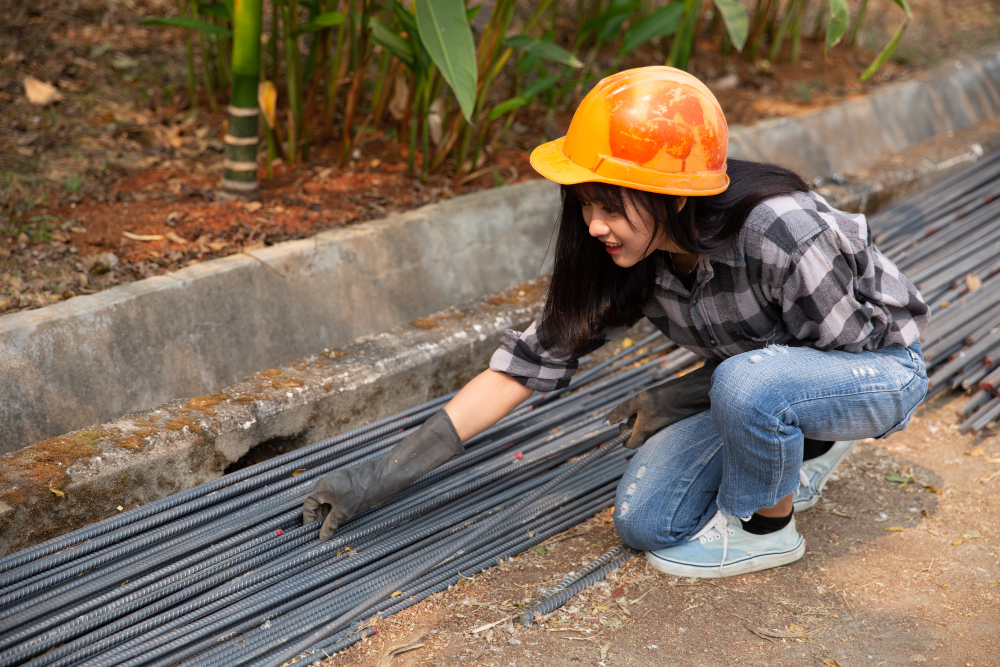The growth and development of the Philippine economy is highly due to the construction industry. It drives infrastructure projects and supports sectors like housing, transportation, and commercial development. However, this rapid growth comes with environmental challenges that are alarming. This industry is a major contributor to carbon emissions, resource depletion, and waste generation. As urbanization accelerates and climate change becomes an ever-pressing issue, addressing the environmental impact of construction supplies in the Philippines is more important than ever.
Current Trends in Construction Materials
Shift Towards Sustainable Materials
There has been a significant shift towards sustainable construction materials in the Philippines. Eco-friendly materials such as bamboo, recycled steel, and low-carbon concrete are gaining traction among builders and developers. Builders can significantly lower their carbon footprints and contribute to a more sustainable future by including these materials in construction practices. This change is pivotal in addressing the resource depletion related to conventional construction materials like cement and concrete, which are energy-intensive to produce.
Government and Industry Initiatives
The Philippine government understands the importance of promoting sustainable construction practices through various policies and initiatives. For example, the Department of Public Works and Highways (DPWH) has implemented guidelines for sustainable infrastructure development that prioritize environmental protection.
Green building certifications such as Leadership in Energy and Environmental Design (LEED) and Building for Ecologically Responsive Design Excellence (BERDE) are gaining traction as well. These certifications provide frameworks for assessing the environmental performance of buildings, encouraging developers to prioritize sustainability from the design phase through construction.
Technological Innovations in Construction
Innovations in materials are helping the shift to sustainable construction. Materials such as bamboo composites and recycled plastic bricks are emerging as viable alternatives that address waste management and durability concerns. Bamboo composites combine bamboo fibers with resin to create strong yet lightweight building materials suitable for various applications.
Aside from this, recycled plastic bricks offer a creative solution to plastic waste while providing a durable building option. These innovations lessen dependence on non-renewable resources and support recycling in construction. As these technologies continue to improve, they are becoming more cost-effective. This makes them more accessible to builders and developers. The integration of sustainable materials can lead to long-term savings on energy costs and maintenance. It will also add to the overall building performance.
Community Engagement and Awareness
Growing Public Awareness
Community participation plays a significant part in promoting sustainable construction practices. Local communities are learning about the environmental impacts of traditional construction methods and are pushing for greener choices. In ecologically sensitive areas such as Palawan and Siargao, community-led initiatives emphasize responsible use of resources and environmentally friendly building practices.
An example of this is local organizations working together to promote the use of indigenous materials that align with traditional architectural styles. Doing so minimizes the environmental impact. These efforts not only foster community pride but also improve resilience against climate change by preserving local ecosystems.
Cultural Heritage and Sustainable Architecture
Applying sustainable practices into construction also presents an opening to preserve cultural heritage. Traditional Filipino architecture often includes locally sourced materials and design principles that blend with the environment. Sustainable architecture adds to the aesthetic appeal and contributes to energy efficiency through passive design strategies. This approach can significantly reduce energy consumption in buildings, further mitigating their environmental impact.
Challenges Facing Sustainable Construction
Economic Barriers
Several economic barriers prevent widespread adoption. A big challenge is the initial cost of switching to eco-friendly materials. While these materials may offer long-term savings on energy costs and maintenance, these costs can be prohibitive for some developers.
Market demand dynamics also impacts the industry. Many consumers still prefer traditional materials due to familiarity or perceived reliability. This preference makes it hard for eco-friendly options to be accepted.
Regulatory and Compliance Issues
Regulatory frameworks that purview sustainable construction can be complex and challenging to navigate. Although there are regulations to promote sustainability, enforcement varies across regions in the Philippines. Builders may face difficulties complying with varying local standards or obtaining necessary permits for innovative materials.
In addition, there is often a lack of awareness of sustainability standards among those involved in the construction industry. This gap can lead to misunderstandings or hesitation to adopt new practices that highlight environmental responsibility.
Future Directions for Sustainable Construction in the Philippines
Opportunities for Growth
The future of sustainable construction in the Philippines holds significant promise for growth and innovation. As people become more aware of climate change, demand for green jobs in construction is growing. Training programs focused on sustainability can equip workers with valuable skills needed for eco-friendly building practices.
Educational institutions are beginning to include sustainability into their curricula, preparing future architects and engineers to give importance to environmentally responsible design principles from an early stage.
Collaboration Among Stakeholders
Cooperation with different stakeholders is important for advancing sustainable construction practices throughout the Philippines. Partnerships between government agencies, industry leaders, non-governmental organizations (NGOs), and local communities can foster innovative solutions that address both economic and environmental challenges.
Successful collaborations have already emerged in various regions where those involved come together to share knowledge, resources, and best practices related to sustainable building techniques. These initiatives strengthen community ties by involving residents in decision-making processes regarding local development projects.
Key Takeaway
Addressing the environmental impact of construction supplies in the Philippines is important as the country continues its path toward urbanization and economic growth. The shift towards eco-friendly construction is supported by government initiatives, technological innovations, community engagement, and increased public awareness of sustainability issues. However, overcoming economic barriers and regulatory challenges will require more effort from all parties involved.



